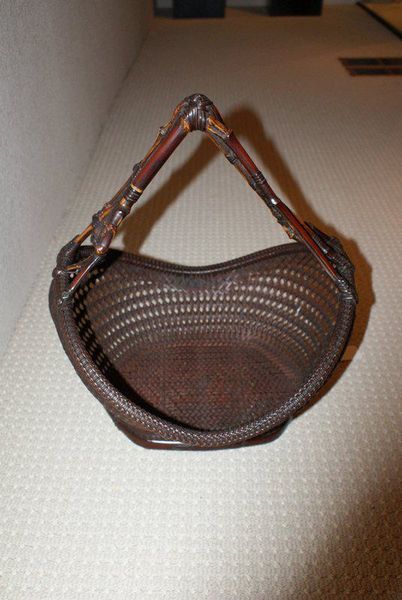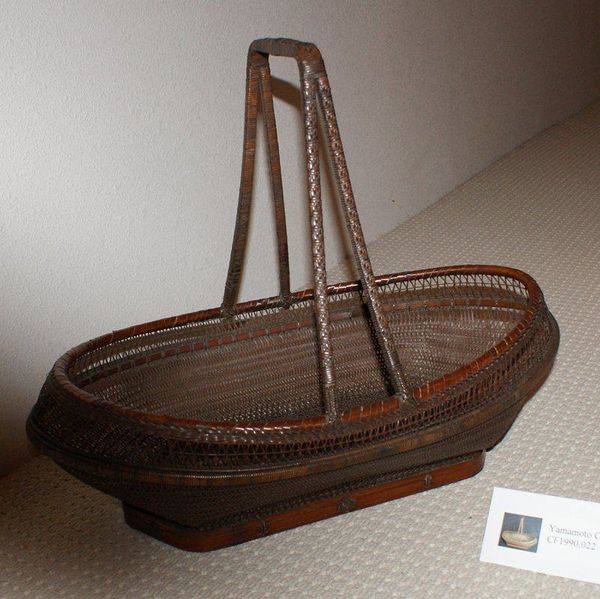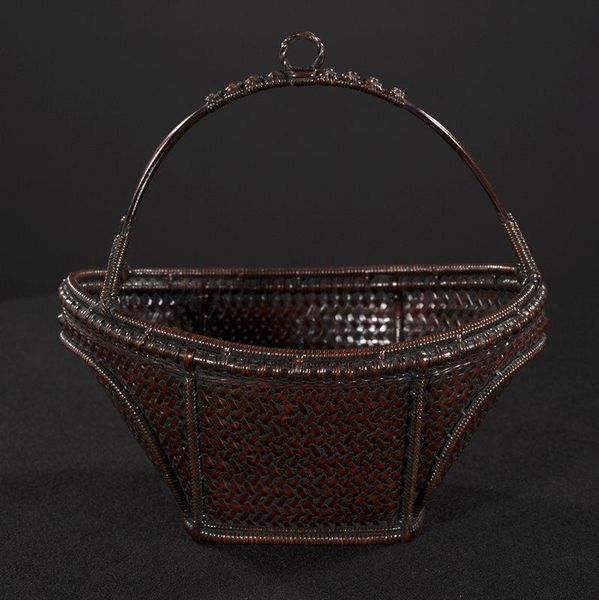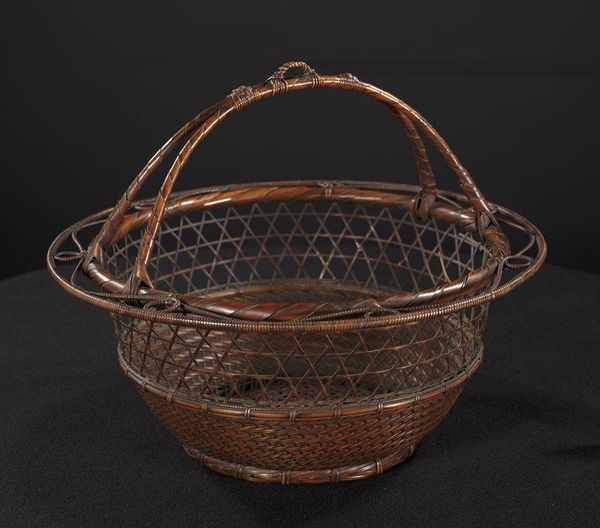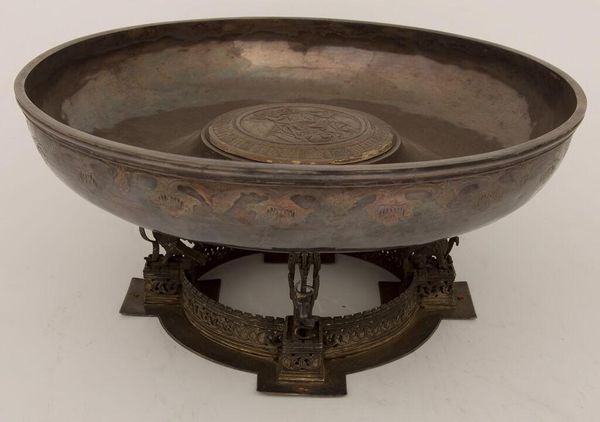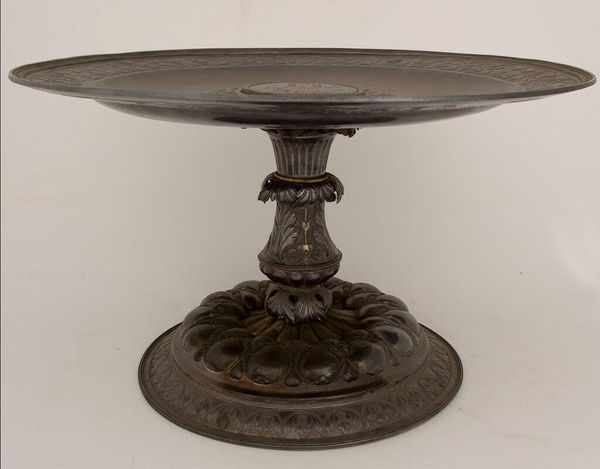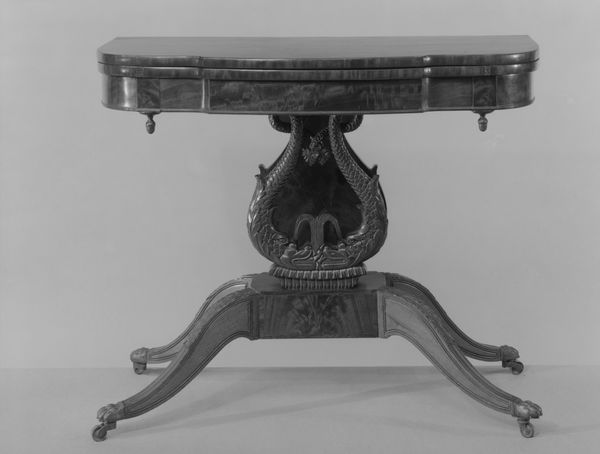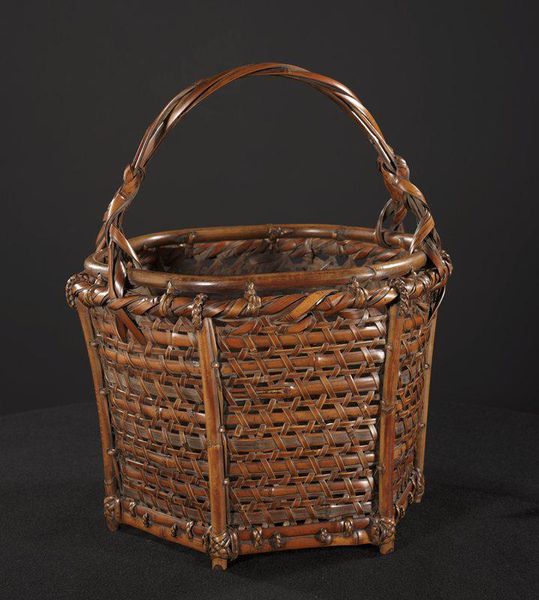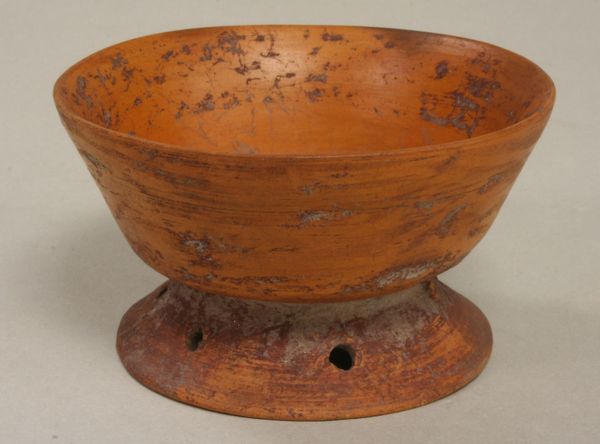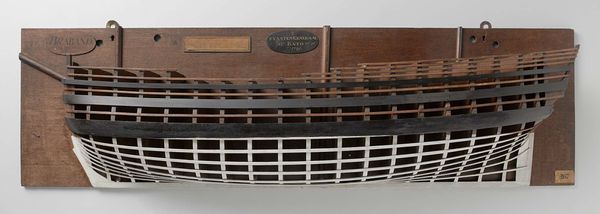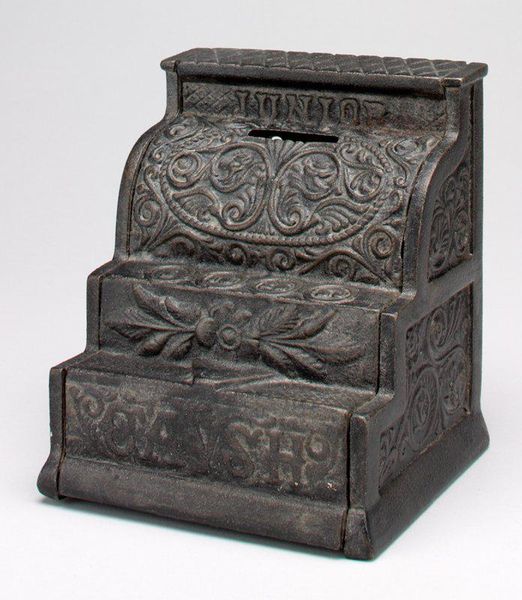
ceramic, wood
#
asian-art
#
ceramic
#
japan
#
wood
Dimensions: 11 7/8 × 22 1/2 × 12 in. (30.16 × 57.15 × 30.48 cm)
Copyright: No Known Copyright
Curator: I’m immediately drawn to the rich texture of this basket; the way the light catches those tiny interwoven strands creates a lovely effect. Editor: And rightly so. The object we’re observing, crafted around the 20th century, is a flower basket in the shape of a boat by Maeda Chikubosai. What strikes me is its intended use; as a form of functional art inextricably linked to Japanese traditions. Curator: Absolutely. The overall form suggests simplicity, but look closer. The material and texture exhibit masterful handling. Do you see the detail in the woven pattern, or the refined treatment of the bamboo handle? Editor: The braiding seems to play on dichotomies, hard/soft, natural/designed. But considering Japanese culture, could the form reference something else, more complex? Is the boat symbolic, evoking themes of journey or passage, relevant in Buddhist or Shinto beliefs? Curator: Interesting you say that. Maeda Chikubosai came from a lineage of basket makers; his art transcends mere craft and speaks to larger social narratives. He sought to imbue his art with elevated symbolic value; using natural materials like wood and bamboo in new, politically transformative, ways during a time of massive social change. Editor: Politically transformative in basketry? Now that is something! Beyond the social commentary, the balance of the piece is captivating. The lines are clear and the execution displays phenomenal structural and artistic skills, creating tension between functionality and sculpture. Curator: And what is a piece of art for if not to ignite such critical tension? Viewing the history of Japan through the lens of a humble basket can transform how we interpret visual language within craft. Editor: That’s a powerful point; examining our contemporary political context through a wider appreciation for global handicraft invites further exploration, doesn’t it?
Comments
No comments
Be the first to comment and join the conversation on the ultimate creative platform.

